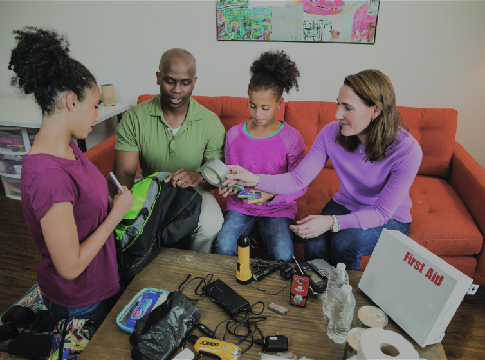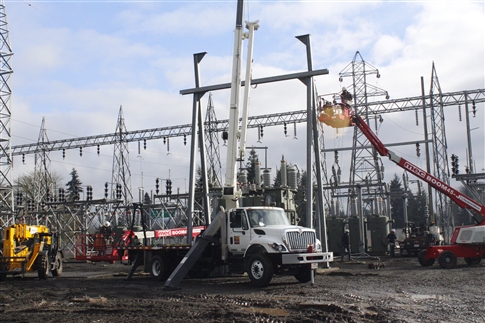Imagine a natural disaster like an earthquake hits Eugene and damages the pipelines that deliver water to your home. It may take days, weeks, or even months to get water flowing back to your tap.
Where should you go to access water? Your local Emergency Water Station.
EWEB’s Emergency Water Stations have the capacity to provide two gallons of water per person per day to everyone in Eugene during an emergency.
Explore this webpage: Prepare Now | Station Locations | How to Disinfect Water | How the Stations Work | Community Demonstrations | Partners
Prepare Now
It can be difficult to remember what to do in an emergency. Complete the following actions now to prepare:
- Print this webpage, place the printout in a Ziplock/waterproof bag and store it somewhere secure and easy to access in an emergency.
- Have clean, easy to carry 1 to 2-gallon containers ready to take with you to the emergency water sites for each person in your household.
- Prepare to disinfect the water once you return home.
- Develop a water conservation plan during the water outage, such as using hand sanitizer for washing hands instead of water.
- Prepare to help others in your neighborhood if safe to do so or if you are able to.
Emergency Water Station Locations
There are seven Emergency Water Stations across the City of Eugene. Locate the station nearest your home so you will know where to go in an emergency.
Note: You must bring your own container to fill and disinfect water prior to use.

Station addresses (view on Google Map):
- Prairie Mountain School - 5305 Royal Ave.
- Howard Elementary School - 700 Howard Ave.
- Eugene Science Center - 2300 Leo Harris Parkway
- Lane Events Center/Fairgrounds - 796 W 13th Ave.
- Sheldon Community Center - 2445 Willakenzie Rd.
How to Disinfect Water
Water from the Emergency Water Station needs to be disinfected before drinking. This is due to the microbiological changes that occur in well water. In order to get the station up and running quickly during an emergency, we wouldn’t have the time to test the water before consumption. You should also disinfect any tap water you store at home before drinking.
Emergency water can be made safe to drink by:
- Boiling for one minute, or
- Adding 1/8 teaspoon of unscented household bleach (label should say it contains between 5-6% of sodium hypochlorite) per gallon and then letting it stand for 30 minutes). Note: It is best to use bleach that is less than one year old as bleach loses potency over time.
How the Stations Work
Each Emergency Water Station site includes a well and submersible pump to pull water from deep underground and all the equipment needed to distribute water to the public. Working with community partners, EWEB will mobilize the stations in a water emergency. Residents must bring their own container to fill and disinfect water prior to use.


Community Demonstrations
- Upcoming: Kennedy Middle School Emergency Water Station Demonstration Event, September 27, 2025
- EWEB Partners with the City and YMCA to Celebrate New Amazon Park Emergency Water Station Site (Sept. 2024)
- Bethel neighbors boost emergency preparedness during Emergency Water Station event (Aug.2023)
- Sheldon area neighbors come out for EWEB’s newest Emergency Water Station (Sept. 2022)
- Community Neighbors Inaugurate Fifth Emergency Water Station at Fairgrounds (June 2022)
Thank you to our Partners
EWEB’s Emergency Water Station program was made possible through partnerships with many other agencies and organizations. Thank you to all the contributors who have made these stations possible:
- 4j School District
- Bethel School District
- City of Eugene
- Eugene Family YMCA
- Eugene Parks Department
- Eugene Science Center
Want to learn more about emergency preparedness and stay up to date on electric and water resiliency projects?
Click here to join our email list.
Related Programs
We're making investments to prepare, replace and maintain our community's water system.
Take EWEB's Pledge to Prepare and start receiving a monthly email with easy, step-by-step recommendations that will help you get two-weeks ready by year-end




